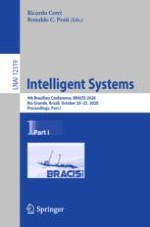2020 | OriginalPaper | Chapter
A Deep Learning Approach for Pulmonary Lesion Identification in Chest Radiographs
Authors : Eduardo Henrique Pais Pooch, Thatiane Alves Pianoschi Alva, Carla Diniz Lopes Becker
Published in: Intelligent Systems
Publisher: Springer International Publishing
Activate our intelligent search to find suitable subject content or patents.
Select sections of text to find matching patents with Artificial Intelligence. powered by
Select sections of text to find additional relevant content using AI-assisted search. powered by
